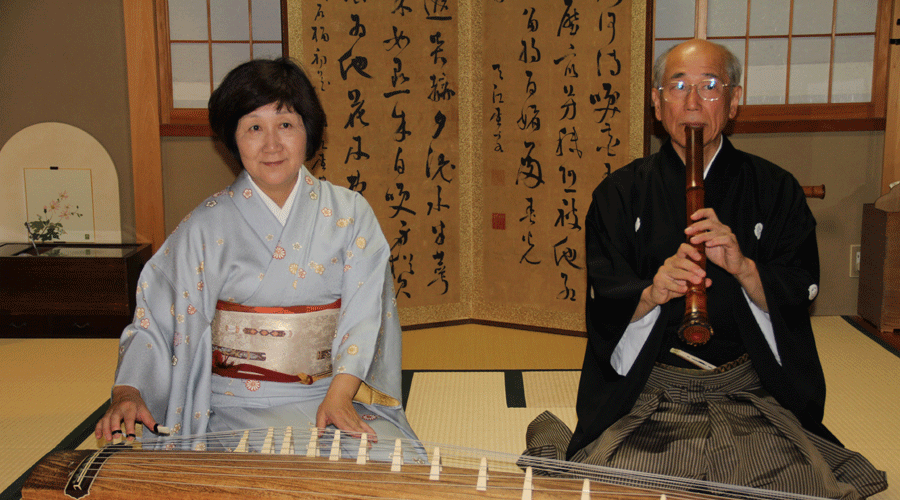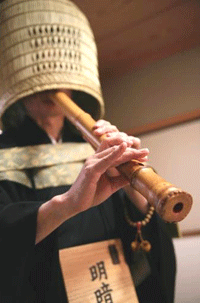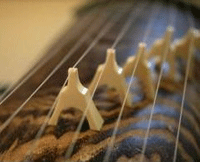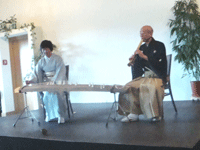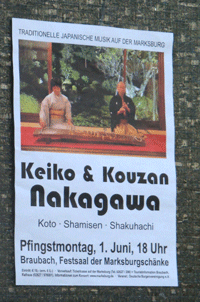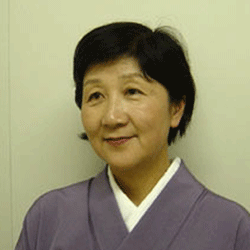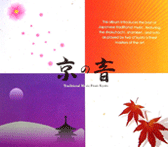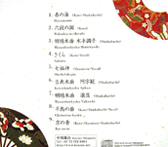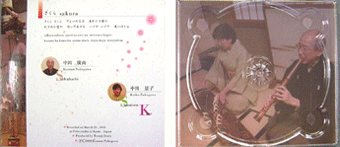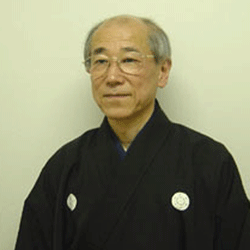 |
KOZAN NAKAGAWA
born and raise in Kyoto, is a highly respected master of the Japanese bamboo
flute, Shakuhachi,. Holding the highest rank that can be given in the Tozan
school of shakuhachi (“Dai-Shi-Han”), he is currently active as both
a performer and instructor. In addition, he is also an accomplished master
of the Zen Buddhist Meian school of shakuhachi, performing under the name
of Kyosei. |
|
|
 |
KOTO
The koto originally came from China around the 8th century and was modified
gradually over a long period of time to become the instrument that we see
in Japan today. The body is made of a light paulownia wood, with 13 strings
made of silk. Each string has its own bridge, shaped like Mt. Fuji, and
these can be moved in a way that allows for an unlimited number of tunings.
Finger picks are used by the players, placed on the thumb, index, and middle
fingers of the right hand.. These picks, along with the bridges, are generally
made of ivory. The classic song, Rokudan, composed by Yatsuhashi Kengyo
in the Edo period, is considered to be the most famous piece in the Koto
repertoire, and is credited with first making the instrument accessible
and popular with the public in that period of history. Since the 1960’s,
an increasing number of contemporary compositions have been added and new
koto designs with 17, 20, or even 30 strings have since been introduced. |
 |
SHAKUHACHI
The shakuhachi is a uniquely Japanese flute, made of one particular species
of bamboo (“madake”), with five finger holes (four in front and one in
back). Its basic five-note scale is in the key of D. The name, shakuhachi,
derives from its length in the traditional Japanese measurement system
(1.8 shaku, or 54 cm.), although a variety of both shorter and longer ones
are also used. |
 |
SYAMISEN
The shamisen is a three- stringed plucked instrument, also called “sangen”.
It originated in China and made its way to Japan through the Okinawan islands
about 400 years ago. Its present form is the result of modifications that
took place after arriving in Kyoto. The body and neck are made of red sandalwood
or other similar hard woods, with a cat or dog skin stretched over it,
and silk strings. The plectrum (“bachi”) is traditionally made from ivory. |
 |
KOMUSO
About 600 years ago, the grandson of a samurai, Masakatsu Kusunoki, got official permission from the emperor to become a warrior-monk. Calling himself Komuso, he set out regularly on pilgrimages as an itinerant monk, playing the shakuhachi for food and other offerings. Later, the Fukeshu Zen sect was founded, and under the protection and sponsorship of the shogun, Komuso in his heyday had 140 temples under his control. At that time, the shakuhachi was only available to those who were involved in Buddhist religious practices. When the Fukeshu sect was disbanded in the 19th century, the shakuhachi established itself as a musical instrument, particularly after the Meiji period.
At present, Komuso practice with the shakuhachi exists only in a ceremonial way, although the Fukeshu remains as a Zen sect and has retained its traditional base in Kyoto’s Tofukuji Temple. |
|
